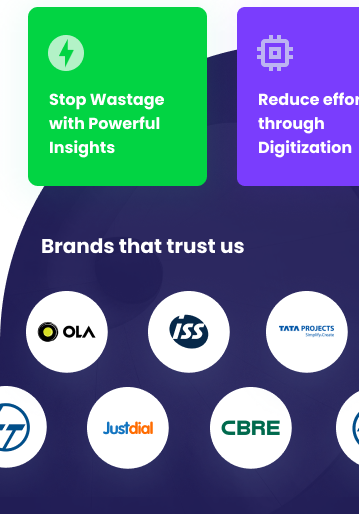The clock is ticking for commercial building owners and facility managers. As the world intensifies its focus on combating climate change, governments are rolling out stricter sustainability regulations—and 2025 is shaping up to be a pivotal year. If you own or manage a commercial building, it’s time to get ahead of the curve.
At Know Your Building, we’re here to help you navigate these changes with ease. In this blog, we’ll break down the new sustainability regulations coming in 2025, why they matter, and how you can prepare to stay compliant—and even thrive—in this new era of green building standards.
Why Are These Regulations Happening?
Buildings are a major contributor to global carbon emissions, accounting for nearly 40% of total energy consumption and 33% of greenhouse gas emissions. To meet international climate goals, governments are tightening the screws on commercial buildings, pushing for higher energy efficiency, reduced carbon footprints, and smarter resource management.
The 2025 regulations are part of a broader trend toward sustainability, driven by initiatives like the Paris Agreement and the UN’s Sustainable Development Goals. For building owners, this means adapting to new rules—or facing hefty fines and reputational damage.
Key Sustainability Regulations Coming in 2025
Here’s a snapshot of what to expect:
Stricter Energy Efficiency Standards
- What’s Changing: Minimum energy performance standards (MEPS) will be raised, requiring buildings to reduce energy consumption significantly.
- What It Means: Older buildings may need retrofits, such as upgrading HVAC systems, installing energy-efficient lighting, and improving insulation.
Mandatory Carbon Emission Reporting
- What’s Changing: Commercial buildings will be required to report their carbon emissions annually, with penalties for non-compliance.
- What It Means: You’ll need robust systems to track and measure energy usage, emissions, and sustainability metrics.
Renewable Energy Integration
- What’s Changing: Many regions will mandate that a percentage of a building’s energy come from renewable sources, such as solar or wind.
- What It Means: Investing in on-site renewable energy systems or purchasing renewable energy credits (RECs) will become essential.
Water Efficiency Requirements
- What’s Changing: New regulations will target water usage, requiring buildings to install low-flow fixtures, smart irrigation systems, and water recycling solutions.
- What It Means: Water conservation will become as important as energy efficiency in achieving compliance.
Smart Building Mandates
- What’s Changing: Governments are pushing for the adoption of smart building technologies, such as IoT sensors, energy management systems, and automated controls.
- What It Means: Buildings will need to become more connected and data-driven to optimize resource use and meet regulatory requirements.
Green Building Certifications
- What’s Changing: In some areas, achieving certifications like LEED (Leadership in Energy and Environmental Design) or BREEAM (Building Research Establishment Environmental Assessment Method) will become mandatory.
- What It Means: You’ll need to invest in sustainable design, construction, and operational practices to earn these certifications.
How to Prepare for the 2025 Regulations
The good news? With the right strategies, you can not only comply with these regulations but also unlock significant cost savings and operational efficiencies. Here’s how to get started:
Conduct an Energy Audit
- Identify areas where your building is wasting energy and prioritize upgrades.
- Focus on HVAC systems, lighting, and insulation, which often offer the biggest ROI.
Invest in Smart Building Technologies
- Deploy IoT sensors and energy management systems to monitor and optimize energy usage in real time.
- Use predictive maintenance tools to keep equipment running efficiently.
Switch to Renewable Energy
- Install solar panels or wind turbines on-site, or partner with renewable energy providers.
- Explore options like power purchase agreements (PPAs) to offset energy costs.
Implement Water-Saving Measures
- Upgrade to low-flow faucets, toilets, and irrigation systems.
- Consider rainwater harvesting and greywater recycling systems.
Track and Report Your Progress
- Use digital platforms to collect and analyze data on energy usage, emissions, and water consumption.
- Ensure your reporting systems are compliant with local regulations.
Pursue Green Building Certifications
- Work with sustainability consultants to achieve certifications like LEED or BREEAM.
- Use these certifications as a marketing tool to attract eco-conscious tenants and clients.
Why Choose Know Your Building?
At Know Your Building, we specialize in helping commercial buildings meet and exceed sustainability goals. Our cloud-native, wireless building management system is designed to simplify compliance with the latest regulations, offering:
- Real-time energy and water usage monitoring.
- Predictive maintenance to keep systems running efficiently.
- Seamless integration with renewable energy sources and smart building technologies.
With our platform, you can turn regulatory challenges into opportunities for cost savings, operational efficiency, and environmental impact.
Don’t Wait Until 2025—Start Preparing Today
The new sustainability regulations may seem daunting, but they also represent a chance to future-proof your building and contribute to a healthier planet. By taking action now, you can stay ahead of the curve and avoid last-minute scrambles (and penalties).
Visit Know Your Building to learn more about our solutions and schedule a demo today. Let’s build a greener, more sustainable future—together.














